5 Visa Temples in India Where Devotees Pray for a Smooth Approval
Ankit Gupta | Jun 07, 2025, 23:19 IST
In a world full of uncertainty and red tape, these temples offer more than divine hope—they provide psychological reassurance, community bonding, and a ritualistic coping mechanism. Whether it’s belief, coincidence, or miracle—thousands claim these temples played a role in fulfilling their foreign dreams.
In the world’s most spiritually diverse country, where the sacred is inseparable from the secular, the journey to foreign lands often begins not at the passport office, but at the temple doorstep. For countless Indians aspiring to study, work, or settle abroad, divine blessings are as important as documentation. In recent years, a unique phenomenon has gained massive traction—“Visa Temples”—places of worship believed to hold divine sway over visa approvals. These sacred shrines have become spiritual pit stops for hopeful travelers, especially those seeking visas to the United States, Canada, the United Kingdom, and Australia.
These temples are not just spiritual landmarks—they are stories of faith, longing, and a nation's intertwined belief in destiny and devotion. Below, we explore five of the most visited visa temples in India, each with a fascinating history, dedicated devotees, and a remarkable connection to international dreams.
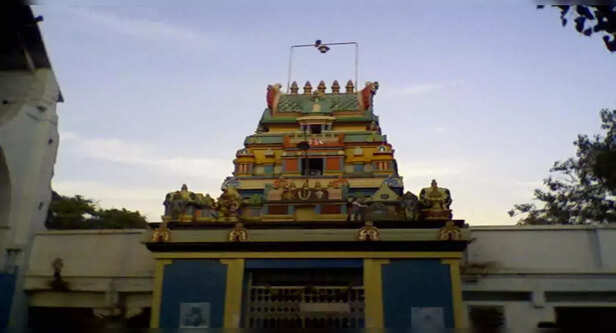
Nestled on the outskirts of Hyderabad, the Chilkur Balaji Temple is often regarded as the birthplace of the visa temple phenomenon. Popularly known as the "Visa Balaji Temple," this shrine is dedicated to Lord Venkateswara, a form of Lord Vishnu. What sets it apart is its reputation for helping devotees secure foreign visas, particularly to the United States.
The temple has no donation boxes and does not accept any money—a rare feature in Indian temples. Instead, the ritual is straightforward and deeply symbolic. A devotee performs 11 pradakshinas (circumambulations) around the sanctum, makes a wish (usually visa-related), and vows to return for 108 pradakshinas once the wish is fulfilled. Thousands have reported that shortly after performing this ritual, they received their visa approvals—often against seemingly unfavorable odds.
The Chilkur Balaji Temple gained prominence in the 1990s when several tech professionals from Hyderabad, then part of India’s emerging IT boom, started attributing their H1-B visa approvals to prayers offered here. Word spread quickly through testimonials, media reports, and social media. It wasn’t long before the temple saw long queues of students, software engineers, and job-seekers waiting for divine intervention before facing their visa interviews.
Despite skepticism, the devotees remain undeterred. For many, it's not just about wish fulfillment—it's about faith calming anxiety, creating mental readiness, and giving them the psychological strength to face the unpredictable bureaucratic systems abroad.
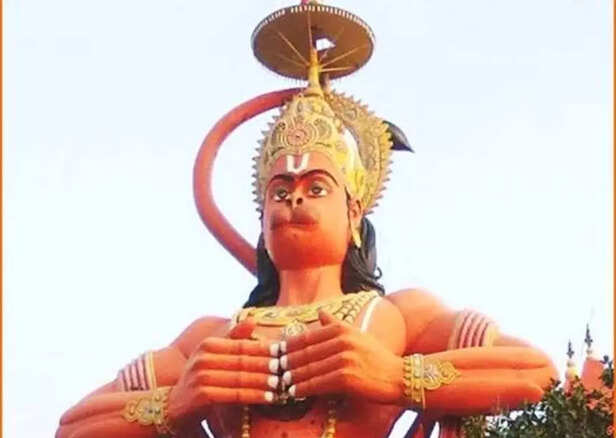
In the bustling lanes of Delhi lies the Shree Siddhi Peeth Hanuman Mandir, a lesser-known yet increasingly popular destination for visa seekers. Devotees visit this temple with a strong belief that Lord Hanuman, known for his invincible strength and unwavering devotion, can overcome obstacles—including those found in embassies.
Unlike Chilkur Balaji, this temple has no formal visa rituals, yet its reputation has soared. People often visit before their visa interviews, placing offerings such as red chola (Hanuman’s sacred cloth), coconut, and vermillion. The temple priests chant special mantras asking Lord Hanuman to bless the devotee with smooth passage through the bureaucratic hurdles that so often define the visa process.
What’s unique here is the diverse background of the devotees. From students to corporate employees, entrepreneurs to families trying for dependent or spousal visas—everyone flocks here. Many say that praying at the Siddhi Peeth has a calming effect on the mind, allowing clarity and courage during interviews, and perhaps even influencing the unseen threads of destiny.
Delhi, being the diplomatic capital of India, has embassies from across the globe. As such, many visa applicants find comfort in visiting this temple just before heading to their appointments—placing their hopes in divine hands before stepping into the corridors of international judgment.
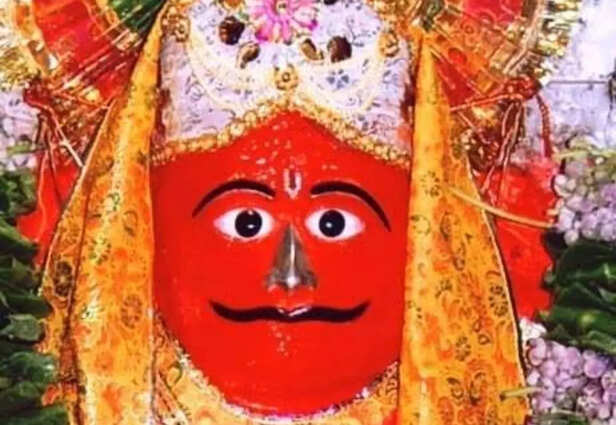
Gujarat, a state known for its entrepreneurial spirit and large diaspora in the United States, United Kingdom, and Canada, has its own visa-centric spiritual hub—the Chamatkari Hanuman Temple in Ahmedabad. “Chamatkari” translates to “miraculous,” and devotees say that miracles are exactly what happen here.
This temple’s rise in reputation coincides with Gujarat’s booming international travel scene. From students applying to universities abroad to families hoping to settle with overseas relatives, the Hanuman temple has become a site of pilgrimage for visa approval. Many people share testimonials of visa rejections turning into approvals after prayers offered here. Some come here before appearing at the US consulate in Mumbai, and others before reapplying after earlier denials.
The rituals are simple but heartfelt. Offerings of oil, red flowers, laddoos, and coconut are common, accompanied by a humble prayer that their dreams to go abroad be granted. Devotees often tie sacred threads to the temple’s iron railings or tie cloth pieces on a designated tree in the compound, symbolizing their wish.
Here, Hanuman is not just a deity—he’s an immigration guide, believed to bless his devotees with the strength to navigate rejection, paperwork anxiety, and the mental toll of long waits. The temple also sees many returnees who come back to offer thanks after successfully receiving their visa—a cycle of faith, fulfillment, and gratitude.
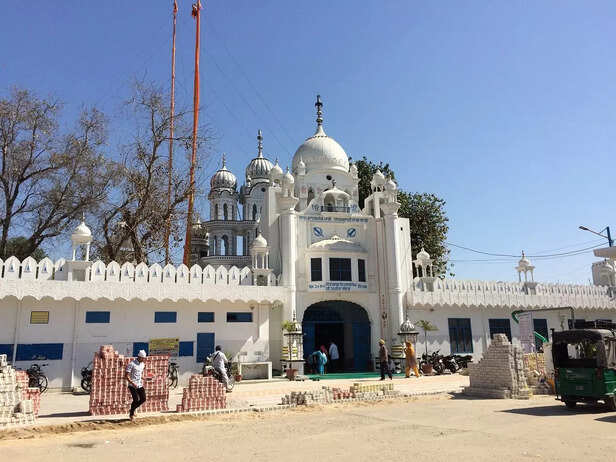
In the heart of Punjab, a land synonymous with migration dreams, lies a Gurudwara unlike any other—Shaheed Baba Nihal Singh Gurudwara in Talhan village, near Jalandhar. What sets it apart isn’t just the belief, but the unique offering made here: toy airplanes.
Devotees, especially youth and families aiming to migrate to Canada, UK, or Australia, offer miniature aircraft models at the shrine. These colorful plastic planes are stacked around the compound as symbols of aspiration and devotion. The tradition is now so widespread that shops around the Gurudwara sell toy planes specially for this purpose.
This practice isn’t just symbolic—it represents the deep-rooted connection between Punjab and foreign lands, particularly Canada. Migration is part of the socio-cultural fabric here, and the Gurudwara has become a focal point for the hopes of many.
Unlike the structured Hindu temples, Sikh Gurudwaras operate differently. There are no paid rituals or priests. People simply come, bow before the Guru Granth Sahib (the holy book), and offer their prayers. Yet, hundreds claim that they received their student or work visas shortly after visiting the Gurudwara.
In many ways, this shrine is a spiritual reflection of Punjab’s global dreams, where planes are prayers, and hope takes flight quite literally.
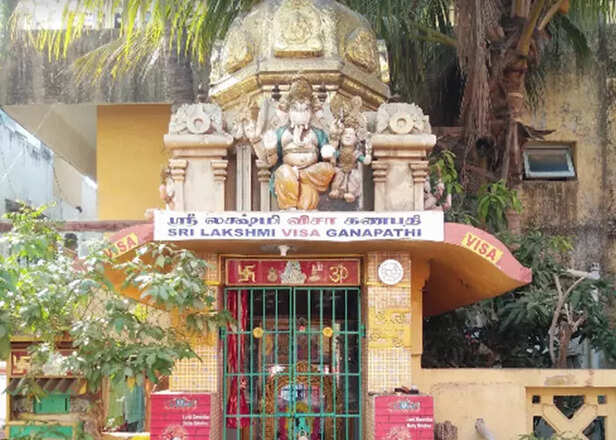
In the southern state of Tamil Nadu, Lord Ganesha is widely revered as the remover of obstacles—and nowhere is that title taken more literally than at the Sri Lakshmi Visa Ganapathy Temple in Chennai. Located in the eastern suburb of Chennai at Padapai, this temple draws visa hopefuls from across Tamil Nadu and beyond.
Here, Lord Ganesha is worshipped in a unique form—Visa Ganapathy, holding a passport and a visa scroll. Devotees believe that by performing special pujas (like the archana and abhishekam), Lord Ganapathy blesses them with the clearance and approval needed for international travel.
It’s common to see students visiting the temple with their original documents—passport, I-20 forms, university admission letters, and appointment confirmation—placing them before the deity while seeking blessings. There’s even a specific Visa Ganapathy Homam ritual that’s organized on request.
Over the years, the temple has gained popularity not just through local word of mouth but also through online forums, where Indian students discuss visa procedures and often recommend this temple for “good luck.”
This is a temple where faith meets paperwork, where tradition meets ambition, and where every visa stamped is seen as not just a bureaucratic formality but divine sanction.
India’s visa temples are more than quirky cultural oddities—they are symbols of hope, faith, and the emotional weight of migration. In a country where dreams to study or work abroad carry not just personal but familial and societal expectations, these temples offer comfort and confidence when official routes seem unpredictable.
Whether or not the divine truly influences diplomatic processes is beside the point. What matters is the inner shift that happens when people pray—the shift from fear to faith, from anxiety to assurance. It’s this mental and spiritual grounding that perhaps makes all the difference.
In the face of consulates and immigration departments, visa temples are the spiritual embassies of India—where the journey begins not with a passport, but with a prayer.
These temples are not just spiritual landmarks—they are stories of faith, longing, and a nation's intertwined belief in destiny and devotion. Below, we explore five of the most visited visa temples in India, each with a fascinating history, dedicated devotees, and a remarkable connection to international dreams.
1. Chilkur Balaji Temple, Hyderabad

The Original Visa God
Nestled on the outskirts of Hyderabad, the Chilkur Balaji Temple is often regarded as the birthplace of the visa temple phenomenon. Popularly known as the "Visa Balaji Temple," this shrine is dedicated to Lord Venkateswara, a form of Lord Vishnu. What sets it apart is its reputation for helping devotees secure foreign visas, particularly to the United States.
The temple has no donation boxes and does not accept any money—a rare feature in Indian temples. Instead, the ritual is straightforward and deeply symbolic. A devotee performs 11 pradakshinas (circumambulations) around the sanctum, makes a wish (usually visa-related), and vows to return for 108 pradakshinas once the wish is fulfilled. Thousands have reported that shortly after performing this ritual, they received their visa approvals—often against seemingly unfavorable odds.
The Chilkur Balaji Temple gained prominence in the 1990s when several tech professionals from Hyderabad, then part of India’s emerging IT boom, started attributing their H1-B visa approvals to prayers offered here. Word spread quickly through testimonials, media reports, and social media. It wasn’t long before the temple saw long queues of students, software engineers, and job-seekers waiting for divine intervention before facing their visa interviews.
Despite skepticism, the devotees remain undeterred. For many, it's not just about wish fulfillment—it's about faith calming anxiety, creating mental readiness, and giving them the psychological strength to face the unpredictable bureaucratic systems abroad.
2. Shree Siddhi Peeth Hanuman Temple, Delhi

A Capital of Miracles
In the bustling lanes of Delhi lies the Shree Siddhi Peeth Hanuman Mandir, a lesser-known yet increasingly popular destination for visa seekers. Devotees visit this temple with a strong belief that Lord Hanuman, known for his invincible strength and unwavering devotion, can overcome obstacles—including those found in embassies.
Unlike Chilkur Balaji, this temple has no formal visa rituals, yet its reputation has soared. People often visit before their visa interviews, placing offerings such as red chola (Hanuman’s sacred cloth), coconut, and vermillion. The temple priests chant special mantras asking Lord Hanuman to bless the devotee with smooth passage through the bureaucratic hurdles that so often define the visa process.
What’s unique here is the diverse background of the devotees. From students to corporate employees, entrepreneurs to families trying for dependent or spousal visas—everyone flocks here. Many say that praying at the Siddhi Peeth has a calming effect on the mind, allowing clarity and courage during interviews, and perhaps even influencing the unseen threads of destiny.
Delhi, being the diplomatic capital of India, has embassies from across the globe. As such, many visa applicants find comfort in visiting this temple just before heading to their appointments—placing their hopes in divine hands before stepping into the corridors of international judgment.
3. Chamatkari Hanuman Temple, Ahmedabad

The Temple of Wonders
Gujarat, a state known for its entrepreneurial spirit and large diaspora in the United States, United Kingdom, and Canada, has its own visa-centric spiritual hub—the Chamatkari Hanuman Temple in Ahmedabad. “Chamatkari” translates to “miraculous,” and devotees say that miracles are exactly what happen here.
This temple’s rise in reputation coincides with Gujarat’s booming international travel scene. From students applying to universities abroad to families hoping to settle with overseas relatives, the Hanuman temple has become a site of pilgrimage for visa approval. Many people share testimonials of visa rejections turning into approvals after prayers offered here. Some come here before appearing at the US consulate in Mumbai, and others before reapplying after earlier denials.
The rituals are simple but heartfelt. Offerings of oil, red flowers, laddoos, and coconut are common, accompanied by a humble prayer that their dreams to go abroad be granted. Devotees often tie sacred threads to the temple’s iron railings or tie cloth pieces on a designated tree in the compound, symbolizing their wish.
Here, Hanuman is not just a deity—he’s an immigration guide, believed to bless his devotees with the strength to navigate rejection, paperwork anxiety, and the mental toll of long waits. The temple also sees many returnees who come back to offer thanks after successfully receiving their visa—a cycle of faith, fulfillment, and gratitude.
4. Shaheed Baba Nihal Singh Gurudwara, Talhan

The Toy Plane Pilgrimage
In the heart of Punjab, a land synonymous with migration dreams, lies a Gurudwara unlike any other—Shaheed Baba Nihal Singh Gurudwara in Talhan village, near Jalandhar. What sets it apart isn’t just the belief, but the unique offering made here: toy airplanes.
Devotees, especially youth and families aiming to migrate to Canada, UK, or Australia, offer miniature aircraft models at the shrine. These colorful plastic planes are stacked around the compound as symbols of aspiration and devotion. The tradition is now so widespread that shops around the Gurudwara sell toy planes specially for this purpose.
This practice isn’t just symbolic—it represents the deep-rooted connection between Punjab and foreign lands, particularly Canada. Migration is part of the socio-cultural fabric here, and the Gurudwara has become a focal point for the hopes of many.
Unlike the structured Hindu temples, Sikh Gurudwaras operate differently. There are no paid rituals or priests. People simply come, bow before the Guru Granth Sahib (the holy book), and offer their prayers. Yet, hundreds claim that they received their student or work visas shortly after visiting the Gurudwara.
In many ways, this shrine is a spiritual reflection of Punjab’s global dreams, where planes are prayers, and hope takes flight quite literally.
5. Sri Lakshmi Visa Ganapathy Temple, Chennai

The Remover of Visa Obstacles
In the southern state of Tamil Nadu, Lord Ganesha is widely revered as the remover of obstacles—and nowhere is that title taken more literally than at the Sri Lakshmi Visa Ganapathy Temple in Chennai. Located in the eastern suburb of Chennai at Padapai, this temple draws visa hopefuls from across Tamil Nadu and beyond.
Here, Lord Ganesha is worshipped in a unique form—Visa Ganapathy, holding a passport and a visa scroll. Devotees believe that by performing special pujas (like the archana and abhishekam), Lord Ganapathy blesses them with the clearance and approval needed for international travel.
It’s common to see students visiting the temple with their original documents—passport, I-20 forms, university admission letters, and appointment confirmation—placing them before the deity while seeking blessings. There’s even a specific Visa Ganapathy Homam ritual that’s organized on request.
Over the years, the temple has gained popularity not just through local word of mouth but also through online forums, where Indian students discuss visa procedures and often recommend this temple for “good luck.”
This is a temple where faith meets paperwork, where tradition meets ambition, and where every visa stamped is seen as not just a bureaucratic formality but divine sanction.
Belief, Bureaucracy, and the Divine Passport
Whether or not the divine truly influences diplomatic processes is beside the point. What matters is the inner shift that happens when people pray—the shift from fear to faith, from anxiety to assurance. It’s this mental and spiritual grounding that perhaps makes all the difference.
In the face of consulates and immigration departments, visa temples are the spiritual embassies of India—where the journey begins not with a passport, but with a prayer.
